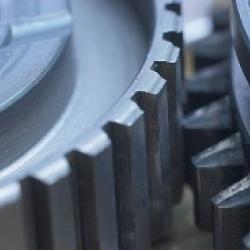Source Institutions
Source Institutions
Add to list Go to activity
Activity link broken? See if it's at the internet archive

Engineer and cartoonist Rube Goldberg is famous for his crazy machines that accomplish everyday tasks in overly complicated ways. Learners use their understanding of simple machines to design and build their own Rube Goldberg machines that perform simple tasks in no less than ten steps. Then, learners build prototypes of their designs. Resource contains investigating questions to assess understanding and extend learning.
- 5 to 10 minutes
- 1 to 2 hours
- $1 - $5 per group of students
- Ages 11 - 14
- Activity
- English
Quick Guide
Materials List (per group of students)
- examples of simple and complex machines (pulleys, hammer, ramps, bicycle, wheelbarrow, etc.)
- Illustrations of Rube Goldberg Machines
- assorted wood, metals, plastics and composites
- foam core board and extruded foam insulation make good bases as they are light, sturdy, and easy to attach things to
- miscellaneous construction materials such as wire hangers, cardboard, screws, wire, string, glue and tape
- assorted tools, such as screwdrivers, saws, drills and hammers
- poster paper, markers, crayons, pencils, rulers, etc
- assorted discarded raw materials for prototypes
- assorted materials that learners bring from home, which may be returned at project end
- Student Activity Worksheet
Subjects
-
Engineering and Technology
- Engineering
-
Physical Sciences
-
Motion and Forces
- Machines
-
Motion and Forces
-
The Nature of Technology
-
The Design Process
- Research and Development
- Invention and Innovation
-
The Design Process
Audience
To use this activity, learners need to:
- see
- touch
Learning styles supported:
- Involves teamwork and communication skills
- Involves hands-on or lab activities
Other
Includes alignment to state and/or national standards:
Includes assesments for student learning:
This resource is part of:
Access Rights:
- Free access
By:
- Center for Engineering Educational Outreach, Tufts University
Source Collection
- TeachEngineering
Rights:
- All rights reserved, Regents of the University of Colorado, 2013
